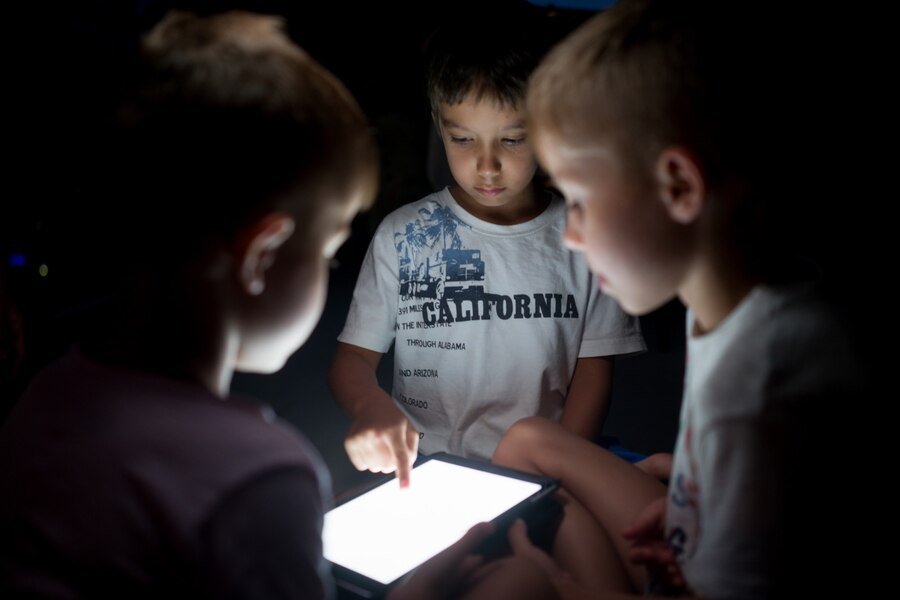The rise of technology in the 21st century has dramatically transformed the way children interact with the world around them. One of the most notable shifts has been the increasing presence of iPads and similar devices in the hands of young children. The term “Army of iPad Kids” refers to the growing number of children who are heavily engaged with tablets, particularly iPads, for entertainment, education, and communication. While this phenomenon has sparked various debates, it is clear that the digital age is reshaping childhood in profound ways. This article explores the impact of iPads on children, both the benefits and challenges, as well as the broader implications for their development.
The Rise of iPads and Technology in Childhood
In recent years, iPads have become a staple in many households, schools, and even public spaces. Apple’s iPad, with its user-friendly interface and vast array of apps, has made it a favorite among parents and educators. From a very young age, children are now introduced to digital devices, often using them for entertainment, such as watching cartoons or playing games, and for learning, with educational apps that help improve literacy, math skills, and creativity.
The availability of tablets at an affordable price has contributed to their widespread adoption across different socioeconomic groups. Whether at home, in schools, or during travel, iPads have become a go-to tool for engaging kids, making them a significant part of a child’s daily routine.
The Educational Benefits of iPads
One of the most significant arguments in favor of iPads for children is their potential as educational tools. The right apps and programs can foster learning in ways that traditional methods may not. Here are some of the educational benefits of iPads:
- Interactive Learning: iPads enable children to engage with content interactively. Instead of just reading or listening, they can manipulate elements, answer questions, and get instant feedback. This interactive nature can make learning more engaging and effective.
- Access to Educational Content: There is a vast library of educational apps covering a wide range of subjects, from language development to science experiments. Children can learn at their own pace, revisiting lessons and activities as needed.
- Improved Digital Literacy: In today’s world, digital literacy is just as important as traditional literacy. By using iPads, children gain hands-on experience with technology, preparing them for a future where digital skills are essential.
- Personalized Learning: With various apps catering to different learning styles, iPads allow for personalized education. Children can explore topics that interest them or focus on areas where they need improvement.
The Risks and Concerns of Too Much Screen Time
While the benefits are undeniable, there are also significant concerns about the excessive use of iPads and other digital devices among children. The most commonly discussed issues include:
- Physical Health Problems: Prolonged use of tablets can lead to a range of health issues, such as eye strain, headaches, and poor posture. Furthermore, it can reduce physical activity, contributing to childhood obesity and related health problems.
- Cognitive Development: Critics argue that too much screen time can impede cognitive development, particularly when it comes to critical skills like attention span, memory, and problem-solving. Some experts believe that excessive screen time may contribute to shorter attention spans, as children may become accustomed to the constant stimulation and instant gratification provided by apps and games.
- Social and Emotional Impacts: Spending too much time on digital devices can limit face-to-face interactions with peers, potentially hindering the development of important social skills. Children who rely heavily on iPads for entertainment may also struggle with forming emotional connections or dealing with real-life challenges.
- Exposure to Inappropriate Content: With the internet being a large part of tablet use, there is always a risk that children might be exposed to inappropriate or harmful content. While parental controls and supervision can help, the temptation to access unfiltered material remains.
iPads and Parenting: Finding a Balance
For many parents, the challenge is finding a balance between the educational benefits of iPads and the risks associated with excessive use. Here are some strategies parents can adopt to ensure their children get the most out of their digital devices without overindulging:
- Set Screen Time Limits: One of the most important steps in managing iPad usage is setting clear screen time limits. Experts recommend that children under 2 years old should have no screen time, and children between 2 to 5 years old should have no more than one hour per day. For older children, it’s crucial to set guidelines to ensure screen time doesn’t interfere with other activities like homework, outdoor play, or family time.
- Encourage Active Use: Instead of letting children passively consume content, parents can encourage them to use iPads for creative activities, such as drawing, composing music, or creating digital stories. This not only makes the screen time more productive but also fosters creativity and problem-solving skills.
- Be Involved: It’s essential for parents to be engaged in their children’s digital activities. By discussing the content they’re consuming and encouraging educational apps, parents can guide their children toward more meaningful experiences.
- Provide Screen-Free Alternatives: Parents should also ensure that there are ample opportunities for non-screen activities, such as outdoor play, reading, or socializing with peers. Encouraging these activities will help children develop a well-rounded set of skills and experiences.
The Future of the Army of iPad Kids
As technology continues to evolve, so too will the role of devices like the iPad in children’s lives. The trend of kids using tablets for education and entertainment is likely to continue, and it will be crucial for both parents and educators to adapt to the ever-changing landscape of digital technology.

One potential future development is the integration of augmented reality (AR) and virtual reality (VR) into educational tools for children. These technologies can provide even more immersive learning experiences, allowing children to engage with subjects like history, science, and art in ways that were previously impossible. However, the challenge remains in balancing these digital innovations with traditional methods of learning and physical activity.
Conclusion
The Army of iPad Kids is a product of the digital age, where the line between the virtual world and reality is becoming increasingly blurred. While iPads can offer educational benefits and serve as powerful learning tools, they also pose risks related to physical health, cognitive development, and socialization. Parents and educators must find a balance between leveraging the advantages of digital technology and ensuring that children are not overly dependent on screens. By setting boundaries, promoting active use, and encouraging diverse experiences, we can help children navigate this digital landscape in a healthy and meaningful way.






